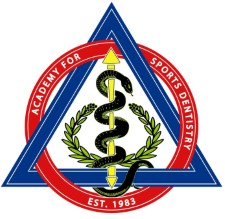FAQ'sWhat states mandate mouthguards? How do I go about getting my state to mandate mouthguards? What are the best mouthguards? How do I start a sports program in my school or community? What is available through ASD? Where do I find material on mouthguards and/or sports dentistry? What company should I contact regarding the possible making of mouthguards? Where can I find a listing of CE available on sports dentistry and/or mouthguards? What does ASD do for me and why should I join? What are the benefits of membership? What is the Academy's position on mandating mouthguards? What states mandate mouthguards?Answer: On a national level all states generally mandate mouthguard use in high school football, ice hockey, men's lacrosse, field hockey, and amateur boxing. Different states have mandated mouthguard use for other sports. The state of Maine mandated the use of mouthguards in all school based soccer activities in 1999. Michigan and Utah have mandated mouthguard use in basketball. Minnesota increased mouthguard mandates in 1993 to include wrestling, soccer, and basketball. This ambitious attempt proved unsuccessful and all of these mandates were rescinded. For your individual state, it would be advisable to contact the state agency that sets the rules for all high school competition. How do I go about getting my state to mandate mouthguards?Answer: Experience has taught that mouthguard mandates are poorly received, difficult to implement, and very unpopular. The unfortunate experience of Minnesota in 1993 is a model that is instructive to us all. If mandates are to be successful, several groups must act in conjunction before the rules are changed. Most often rules are changed without the knowledge of athletes, coaches, and dentists. These rule changes are well meaning attempts to force athletes to do what is good for them. This has not proven to be a successful way to add safety equipment to sports which historically has never used them. Athletes and parents must be educated as to the different types of mouthguards. Most athletes are convinced that mouthguards will not be comfortable, will not allow them to speak, and will not allow for proper breathing. Inexpensive and difficult to fit over the counter mouthguards will serve to reinforce these ideas. Coaches have not proven to be the ally of increased safety requirements. A coach who is supportive is a very valuable asset. Coaches must be educated that oral protection will not hamper an athlete's ability to perform. School administrators and athletic directors are usually receptive. These people tend to make rules unilaterally without involving others in the process. Dentists are largely uninformed of high school mouthguard rules. Dentists must become educated themselves so they can educate their patients. Dentists must make quality protection affordable and accessible. They must be able to provide protection in adequate numbers with adequate quality.v A state's rulemaking agency, such as a high school principal's association, should proceed cautiously. There should be no rush and adequate preparations should be made to ensure success. All the good intentions in the world will not persuade an unprepared population. What are the best mouthguards?Answer: The position of the Academy for Sports Dentistry is that to be adequate, a mouthguard must be properly fitted and properly worn. In order to ensure a proper fit, a mouthguard is best fitted by a dental professional. It is generally accepted that a custom fitted mouthguard fabricated over a dental cast of the athlete's teeth will give the best fit. A mouthguard made by a dental professional can also tailor the mouthguard to the demands of the athlete and the sport. Speech requirements, individual occlusal differences and relative dental and concussion injury risks of each sport can only be customized by fabricating an individual mouthguard. It is difficult to see how an over- the-counter mouthguard can fill all of an athlete's requirements without being checked and adjusted by an informed dental professional. Who should wear a mouthguard?Answer: Anyone participating in a sport that contains a chance of injury to the teeth, jaws, or oral soft tissues or which shows a potential risk of concussion could benefit from the use of a mouthguard. In general, anyone participating in a contact or collision sport could benefit from a properly fitted and properly worn mouthguard. Participants in an individual sport, such as rollerblading, which puts the athlete at risk, should use a mouthguard. A properly fitted and properly worn mouthguard shouldn't interfere with an athlete performing any sport at the highest level. How do I start a sports program in my school or community? What is available through ASD?Answer: Starting a community mouthguard program can be a rewarding experience. Several states, such as Ohio and Illinois, have composed practical manuals to help get you started. However, an important first step to any community program is to educate all of the parties affected (i.e. athletes, parents, coaches, school officials, team trainers, and local dental professionals). While anyone can be a valuable asset to a community program, it is critical that the team dentist realizes that he or she will be the motivating force in the program. No one cares as much about the general dental well being of the community as the dentist. Without continued enthusiasm, most programs will not continue. Any support from trainers, coaches, school administrators, or community program administrators, would be extremely helpful. Where do I find material on mouthguards and/or sports dentistry?Answer: Material on sports dentistry exists in all of the common sources of dental information such as journals, the Internet, continuing education, and state dental health offices. The single best place to gather information on sports dentistry is to attend the Academy for Sports Dentistry's annual meeting. The free exchange of knowledge at this meeting is truly impressive. The best single source of printed information has been the October 1991 issue of The Dental Clinics of North America issue on Sports Dentistry. This volume has been the closest to a textbook on sports dentistry. This issue has been updated and is available as the January 2000 edition of The Dental Clinics of North America, Volume 44:1, W.B. Saunders, Company. The central office of ASD can put you in contact with specific individuals who may be best suited to fill your requirements. What company should I contact regarding the possible making of mouthguards?Answer: Several companies have made the fabrication of custom fitted mouthguards an important part of their service. Dentsply Raintree Essix, Glidewell Laboratories, Great Lakes Orthondontics and Sportsguard Laboratories, Inc. deliver high quality heat pressure laminated mouthguards in a variety of styles. They have generously supported ASD in the past. The addresses of these companies may be obtained through the ASD Central Office. It has been my experience that many local labs also fabricate custom mouthguards, but may vary on the style and type of guard (pressure lamination vs. vacuum formed). Where can I find a listing of CE available on sports dentistry and/or mouthguards?Answer: Once again, the absolute best CE courses on Sports Dentistry are found at the annual meeting of the ASD, which will be held in San Diego, CA in 2014. Most large regional meetings seem to have something on Sports Dentistry. Several of our members, most notably Drs.David Kumamoto, Doug Lambert, Mark Roettger and Steve MIlls, make presentations often. Checking the ASD Website may yield more information. The American Dental Association, through their unique seminar series, has a day-long seminar on "Advances in Sports Dentistry: Strategies for the New Millennium." What does ASD do for me and why should I join?Answer: Sports Dentistry holds a small niche in dentistry and it can be difficult to find support. The membership of the ASD is largely a collection of like-minded individuals who have an interest in the connection between sports and dentistry. It is important to us as an organization that everyone involved with sports at all levels consider being a member. This allows us to be the most complete network of individuals who are knowledgeable on the subject. The membership of ASD has proven to be some of the most generous and accessible people in dentistry. Members have experience in being team dentists, mouthguard technicians, epidemiologists or community experts. The practice of sports dentistry is not a large part of most practices from a volume or a financial point of view. This means that those interested dentists do so mostly for enjoyment of the subject. It is important that dentists join because the strength of our organization is our membership. Our members, both individual and corporate, are always available and our central office is expert at connecting people with questions to people with answers. What are the benefits of membership?Answer: As a member of the Academy for Sports Dentistry you will receive a reduction in registration fees for the annual symposium. On average 14-21 continuing education hours are provided at the annual symposium.A print and online subscription to Dental Traumatology the official Journal of the Academy for Sports Dentistry (Value $995 US). In addition, members will receive reduced pricing for ASD Emergency Treatment Cards. As a member of the ASD you can purchase the recently updated ASD power point presentation (120 slides) You will have access to the members only sections on the ASD website which includes: • Community Profile • Community Forums • Messaging System • Academy For Sports Dentistry Newsletters • Be listed in our on-line searchable directory How does one get involved in this organization? Not just a "check book" member. It seems like a few people do everything.Answer: The Academy for Sports Dentistry has grown tremendously in the last five or six years and you're right; until recently most of the work was done by a few individuals. With our growth, the organizational structure is becoming more complex. The biggest change is the addition of committees. Each committee will have a board liaison and a chairman, but all will need members. This is a great and important way to become involved. The current committees are:
Other ways to become involved are to present a talk, a table clinic, or other demonstration at our annual meeting. Perhaps one might consider organizing an annual meeting. This is a particularly daunting task and helpers are always welcome. A current board member became involved because he became a liaison between two groups, the ASD and the American Academy of Pediatric Dentistry. The ASD would consider formal liaison designation to any organization such as state dental societies, specialty organizations, trainer organizations, school organizations, medical organizations or hygiene associations. We are open at all times to anyone who wants to create a niche for him or herself. You are always very welcome to submit something to our newsletter. You are limited only by your imagination. What is the Academy's position on mandating mouthguards?Answer: Mandates for the use of protective equipment, especially athletic mouthguards, are endorsed by the ASD as stated in our policy statement. When implementing such programs, problems arise and you would be best served by speaking to someone who has had this experience. Our executive secretary can put you in contact with several members with such experience. |



